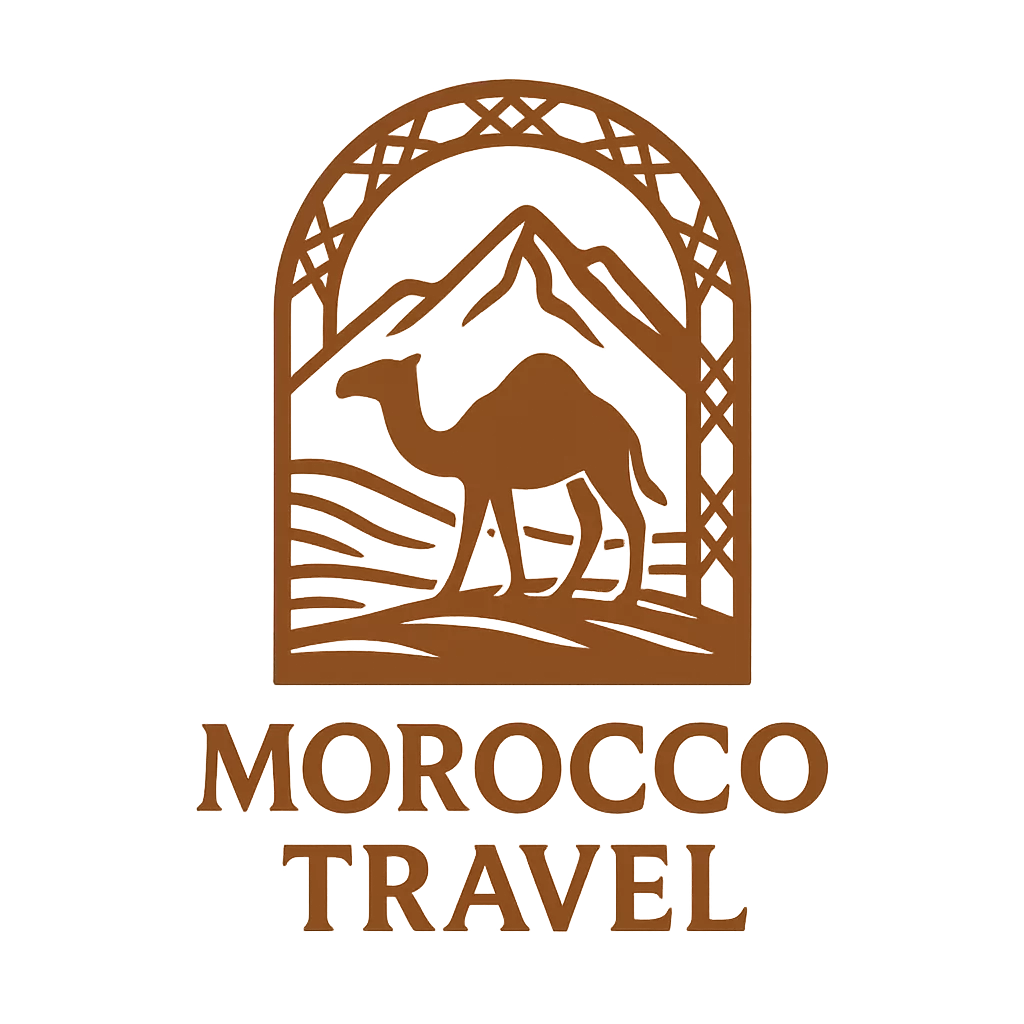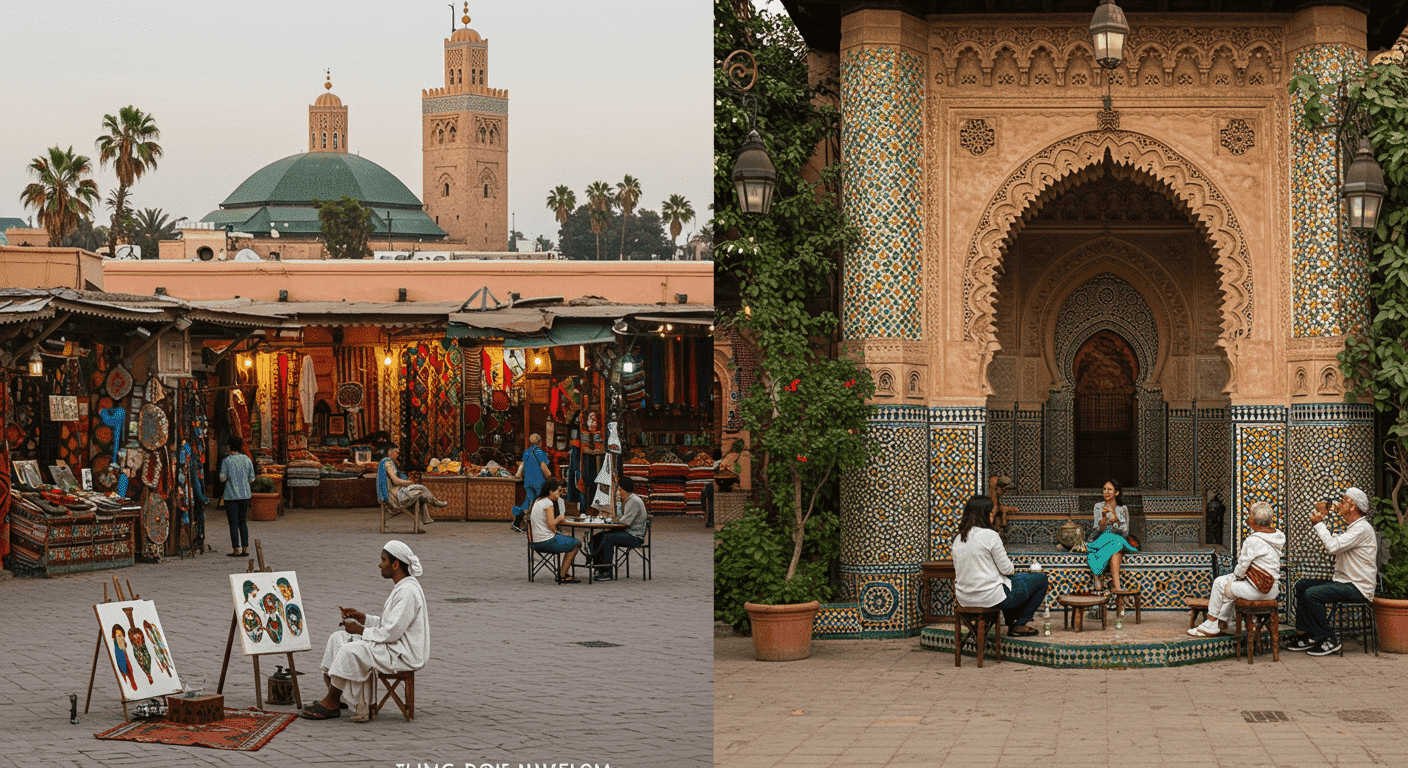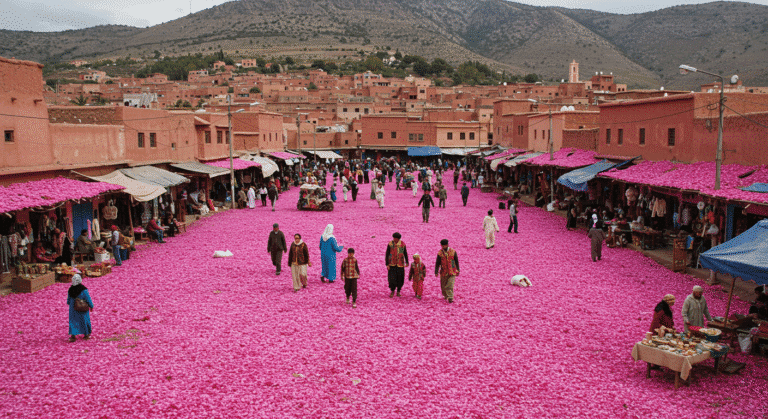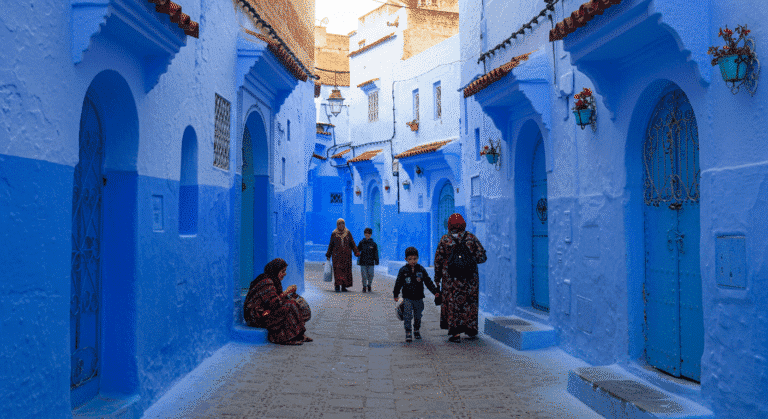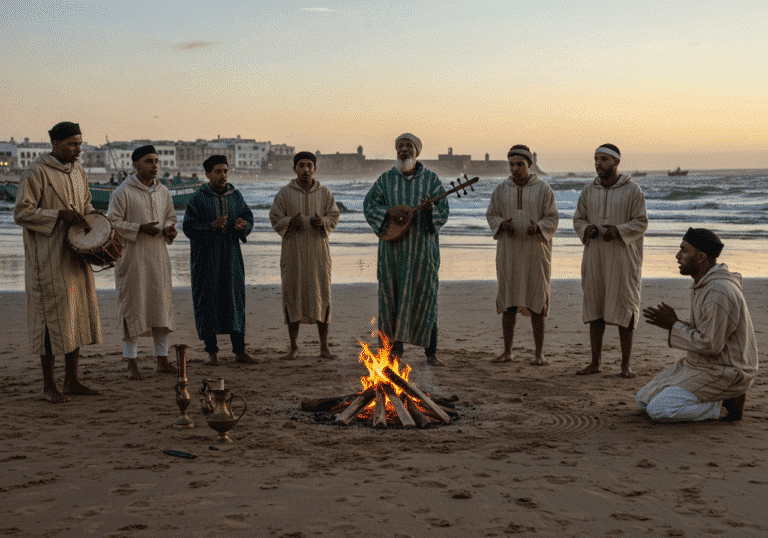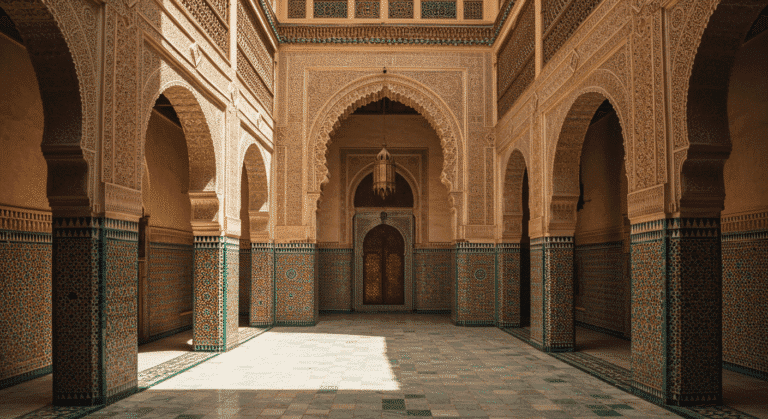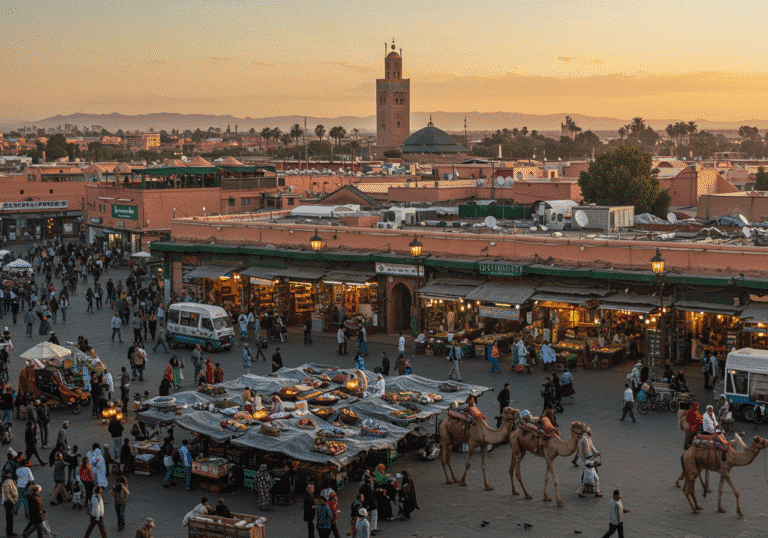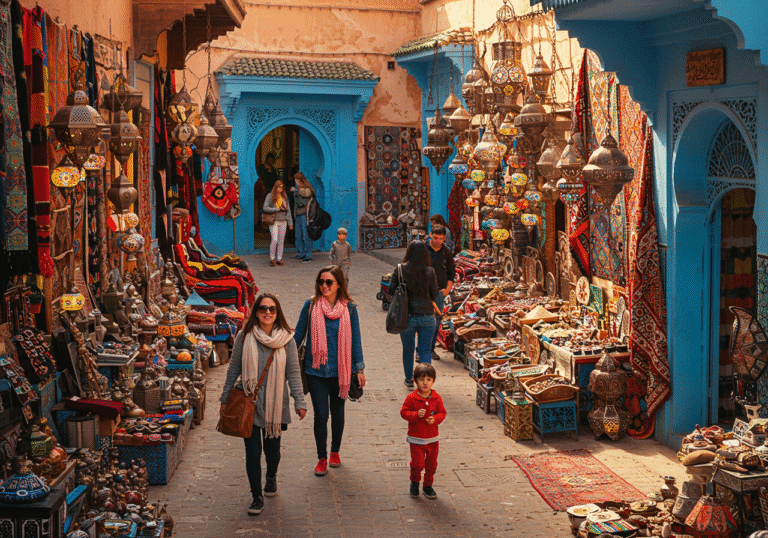15 Incredible Things to Do in Marrakech
Unlocking the Secrets of Marrakech
Did you know that 73% of first-time visitors to Marrakech miss out on the city’s most authentic experiences by staying within the same tourist circuit? As the fourth largest city in Morocco and a gateway to both the Atlas Mountains and the Sahara Desert, Marrakech offers an intoxicating blend of ancient traditions and contemporary luxuries that extends far beyond its famous souks and riads. This comprehensive guide unveils the top things to do in Marrakech for travelers seeking genuine connections with this mesmerizing Red City, ensuring your 2025 visit will be as enriching as it is unforgettable.
Marrakech captivates with its labyrinthine medina, opulent palaces, and vibrant cultural scene. Whether you’re drawn to its UNESCO-protected architecture, mouth-watering cuisine, or the allure of desert adventures, this guide will help you navigate the essential things to do in Marrakech with confidence and cultural sensitivity.
Travel Checklist: What to Pack for Marrakech
Preparing for Marrakech requires thoughtful consideration of both cultural norms and practical necessities:
Clothing Essentials:
- Lightweight, breathable fabrics (cotton, linen) for daytime exploration
- Modest attire covering shoulders and knees, particularly important for women and when visiting religious sites
- Light jacket or wrap for cool evenings (temperatures can drop by 15°C after sunset)
- Comfortable walking shoes for navigating uneven medina streets
- Sun hat with wide brim and quality sunglasses with UV protection
Travel Gear:
- Universal power adapter (Morocco uses type C/E plugs, 220V)
- Portable battery pack for phone charging during full days of exploration
- Small backpack or anti-theft crossbody bag for daily excursions
- Reusable water bottle with built-in filter
- Camera with extra memory cards to capture Marrakech’s photogenic scenes
Documentation:
- Passport valid for at least 6 months beyond entry date
- Printed and digital copies of hotel reservations and travel insurance
- Small amount of Moroccan Dirhams (MAD) for immediate arrival needs
- International driving permit if planning excursions beyond the city
Digital Preparation:
- Download Maps.me or Google Maps offline maps of Marrakech
- Install Morocco-specific apps like Marrakech Riad Guide and Morocco Arabic Phrasebook
- Set up a VPN service for secure internet connections
Pro Tip: Pack a small gift pouch with items like quality pens, small notebooks, or packaged treats from your home country. These make thoughtful tokens of appreciation for guides or riad hosts who provide exceptional service.
Best Time to Visit Marrakech
Timing your visit to Marrakech strategically can dramatically enhance your experience:
Spring (March to May):
- Optimal season with average temperatures of 22-28°C (72-82°F)
- Spring gardens in full bloom, particularly at Majorelle and Menara
- 42% lower accommodation rates in early March compared to peak season
- Experiences fewer crowds at major attractions (visitor data shows 35% reduction from summer peaks)
Fall (September to November):
- Second-best period with comfortable temperatures of 21-27°C (70-81°F)
- Cultural events like the Marrakech Contemporary Art Biennale (October 2025)
- Hotel availability increases by 28% compared to summer months
- Perfect timing for desert excursions with mild daytime temperatures
Winter (December to February):
- Daytime temperatures average 18-20°C (64-68°F) with cool evenings
- Annual visitor numbers drop by 40% compared to peak season
- Premium accommodations available at 25-35% discount
- Christmas/New Year period brings brief spike in European visitors
Summer (June to August):
- Intense heat with temperatures regularly exceeding 38°C (100°F)
- Accommodation prices drop by 15-25% except for properties with pools
- Early morning and evening activities recommended for comfort
- Local cultural events like the National Folklore Festival (July)
Data-Driven Insight: According to tourism analytics, October visitors spend an average of 1.8 days longer in Marrakech than July visitors, likely due to more comfortable exploration conditions.
Step-by-Step Itinerary: Top 15 Things to Do in Marrakech
1. Immerse Yourself in Jemaa el-Fna Square’s Sensory Symphony
Often described as the beating heart of Marrakech, Jemaa el-Fna transforms throughout the day. Begin your visit around 4pm to witness its evolution:
- Start at Café de France’s rooftop for a panoramic view of the square coming to life
- Descend to explore the eastern food stalls first, where locals recommend sampling bissara (fava bean soup)
- Navigate clockwise around the square to experience storytellers, musicians, and artists
- By 7pm, venture into the center for dinner at stall #32 (consistently rated highest for authentic harira soup)
- Complete your visit by 10pm when local families typically begin heading home
Local Insight: While photographing performers, small tips (10-20 MAD) are customary and appreciated. Ask permission first, especially when photographing women.
2. Navigate the Historic Medina’s Secret Corners
The ancient walled city offers more than shopping opportunities:
- Enter through Bab Doukkala gate and follow the quieter northern route
- Visit the less-frequented Mouassine Museum (9am opening offers 30% fewer visitors)
- Discover the hidden Chrabliyine Mosque with its distinctive emerald-tiled minaret
- Stop at Souk Semmarine for traditional crafts, venturing at least three stalls deep for better prices
- Conclude at the Rahba Kedima spice square, where the northwestern corner offers the highest quality saffron
Expert Tip: Each Thursday morning, local women sell handcrafted textiles in the small square behind the Mouassine Fountain, a market untouched by mass tourism.
3. Explore the Breathtaking Bahia Palace
This 19th-century masterpiece showcases the height of Moroccan craftsmanship:
- Arrive at opening (8:30am) to photograph the Grand Courtyard without crowds
- Focus on the ceiling details in the Small Riad section, featuring over 160 unique geometric patterns
- Visit the former harem quarters, recently opened to the public in 2024
- Spend time in the summer salon with its intricate zellij tilework
- Explore the gardens during late morning when the light perfectly illuminates the citrus trees
Cultural Context: The palace was built for Si Moussa, a former slave who rose to become grand vizier, representing social mobility in late 19th-century Morocco.
4. Discover Tranquility at Majorelle Garden and YSL Museum
This iconic blue-accented garden provides a peaceful contrast to the medina’s energy:
- Begin at the adjacent Yves Saint Laurent Museum to understand the designer’s connection to Marrakech
- Enter Majorelle Garden before 11am (visitor data shows 60% fewer guests)
- Follow the central path to the Berber Museum, housed in Majorelle’s former studio
- Spend time at the lily pond where the acoustics create a natural sound barrier from city noise
- Visit the recently expanded cactus garden, featuring 300+ species from around the world
Photography Tip: The famous cobalt blue pavilion photographs best in late afternoon light, when shadows accentuate its architectural details.
5. Learn Traditional Crafts at Heritage Museums
Marrakech preserves its artisanal heritage through interactive museums:
- Begin at Dar Si Said Museum of Moroccan Arts, recently renovated with hands-on exhibits
- Participate in a tile-making workshop at the Maison de la Photographie (pre-booking required)
- Visit the new Marrakech Textile Museum showcasing centuries of Moroccan weaving techniques
- Observe master craftsmen at the Ben Youssef Madrasa Artisan Center
- Complete your cultural immersion at the Museum of Moroccan Cuisine with a cooking demonstration
Authentic Experience: The Heritage Museums Collective offers a combined ticket that includes transportation between locations and reduces entry costs by 25%.
6. Rejuvenate at a Traditional Hammam
Experience Morocco’s ancient bathing ritual for both relaxation and cultural insight:
- Choose between authentic local hammams (Hammam Dar el-Bacha for traditional experience) or luxury spa versions (Royal Mansour for upscale treatment)
- For authentic experiences, visit during weekday mornings when mainly locals attend
- The complete ritual includes steam room, black soap scrub, rhassoul clay treatment, and mint tea relaxation
- Communal hammams typically cost 150-200 MAD, while private spa experiences range from 600-1500 MAD
- Bring your own flip-flops and extra change of clothes (traditional hammams don’t provide these)
Cultural Note: Most traditional hammams are gender-segregated with specific women’s and men’s hours. Luxury hotel hammams typically offer private couples options.
7. Take a Moroccan Cooking Class
Culinary workshops offer delicious souvenirs in the form of new skills:
- Start with a guided market tour to select fresh ingredients with a chef
- Learn to prepare classic dishes like tagine, pastilla, and authentic couscous
- Master the art of Moroccan bread baking in traditional clay ovens
- Discover the secret to properly brewing mint tea with the ceremonial pouring technique
- Enjoy your creations for lunch in a traditional riad setting
Recommended Options: La Maison Arabe offers the most comprehensive class (including spice identification), while Clock Kitchen provides the most intimate experience with maximum 6 participants.
8. Venture to the Atlas Mountains for a Day Trip
Just 90 minutes from Marrakech lies a different world of Berber villages and mountain landscapes:
- Depart early (7:30am) to reach Imlil village before the day heats up
- Visit the Asni Saturday market to see rural Moroccan commerce in action
- Choose between moderate hiking options (2-3 hours) around Aremd village or more challenging routes
- Share lunch with a local Berber family (arrange through reputable tour operators like Toubkal Trekking)
- Return via Ourika Valley to see traditional argan oil production methods
Seasonal Consideration: Mountain temperatures can be 10-15°C cooler than Marrakech. From November to March, bring warm layers for comfort.
9. Soar Above the Landscape in a Hot Air Balloon
For an unforgettable perspective of Marrakech and its surroundings:
- Book with Ciel d’Afrique or Marrakech By Air (the only two safety-certified operators)
- The experience includes pre-dawn pickup (around a 4:30am start)
- Flights last approximately 40-60 minutes, reaching heights of 1,000 meters
- The best views capture the contrast between the Red City and the snow-capped Atlas Mountains
- Most packages include post-flight Berber breakfast and return transportation
Value Insight: Booking directly rather than through hotel concierges saves an average of 20% on balloon experiences.
10. Marvel at the Koutoubia Mosque and Gardens
The city’s most iconic landmark deserves thoughtful exploration:
- While non-Muslims cannot enter the mosque interior, the architecture is best appreciated from the western side
- Visit at sunset when the illumination system highlights the intricate minaret details
- Explore the archaeological site behind the mosque revealing foundations of the original 12th-century structure
- Enjoy the recently restored gardens with their geometric reflecting pools
- Listen for the distinctive muezzin call to prayer, considered among the most melodic in Morocco
Historical Context: The mosque was built with architectural proportions based on the Golden Ratio, making it mathematically as well as aesthetically significant.
Book Your Trip Now
11. Shop Ethically in the Souks
Navigate Marrakech’s famous markets with purpose and principles:
- Begin at Ensemble Artisanal for fixed prices and quality benchmarks before entering the traditional souks
- Focus on sustainable crafts like recycled glass lamps and naturally-dyed textiles
- Visit women’s cooperatives like Association Amal and Henna Art Café that ensure fair compensation
- Learn to distinguish authentic handcrafted items from imported replicas (genuine leather goods have distinctive natural edges)
- Practice haggling respectfully, aiming for about 40% off initial asking prices
Responsible Shopping: The “Moroccan Fair Trade Route” app identifies workshops where artisans receive at least 60% of the final sale price.
12. Experience a Sunset Camel Ride in the Palmeraie
The palm grove oasis on Marrakech’s outskirts offers desert experiences without lengthy travel:
- Book with operators that limit groups to 8 riders maximum for a more personal experience
- Select late afternoon departures (around 4:30pm in summer, 3:30pm in winter)
- The typical route covers 7km through ancient date palms and small Berber settlements
- Most experiences include traditional mint tea ceremonies at a desert camp
- Consider the premium “astronomical” option that includes stargazing with telescopes after sunset
Animal Welfare Note: Choose operators like Palmeraie Luxury Camel Experience or Sahara Feeling that follow SPANA animal welfare guidelines.
13. Discover Modern Marrakech in Gueliz
The French-built “new city” showcases contemporary Moroccan culture:
- Begin at Place du 16 Novembre, the district’s central square recently renovated with interactive art
- Explore the emerging art scene at David Bloch Gallery and Voice Gallery
- Visit 33 Rue Majorelle for modern Moroccan design pieces from emerging creators
- Experience contemporary Moroccan cuisine at +61, where traditional flavors meet innovative techniques
- End with sunset drinks at Sky Bar for panoramic views contrasting old and new Marrakech
Cultural Evolution: Gueliz hosts the annual “Marrakech Contemporary Week” each November, showcasing how Moroccan artists are reinterpreting traditional aesthetics.
14. Relax in Secret Gardens
Escape the urban energy in Marrakech’s hidden green spaces:
- Le Jardin Secret features Islamic garden design with sophisticated water features (best visited at 10am)
- The newly accessible Royal Gardens of Agdal open to the public on Wednesdays and Fridays
- Cyber Park combines historical olive groves with Morocco’s first public smart-garden technology
- Anima Garden, designed by Austrian artist André Heller, showcases botanical art installations
- The rooftop garden at El Fenn hotel offers visitor access with reservation of afternoon tea
Seasonal Highlight: During rose season (April-May), the Beldi Country Club garden displays over 40 varieties of heritage roses.
15. Take a Moroccan Pottery Workshop
Learn the ancient art of Moroccan ceramics through hands-on experience:
- Workshops at Terre des Etoiles offer full-day experiences including clay preparation
- Learn traditional patterns and techniques from master artisans with 20+ years experience
- Create personalized pieces fired in authentic wood-burning kilns
- Workshops typically include materials, firing, and international shipping of your creations
- Combine with visits to fossil sites where much of Morocco’s distinctive clay originates
Authentic Touch: Family workshops in Sidi Ghanem industrial quarter offer the most traditional experiences, with techniques unchanged for generations.
Budget Breakdown: Marrakech Travel Costs
Plan your Marrakech adventure with these comprehensive cost guidelines:
Accommodation (per night):
- Budget riad or guesthouse: 300-600 MAD ($30-60)
- Mid-range riad in the medina: 800-1,500 MAD ($80-150)
- Luxury riad or resort: 2,000-10,000+ MAD ($200-1,000+)
Food and Dining:
- Street food meal (sandwich, juice): 20-40 MAD ($2-4)
- Local restaurant meal: 70-150 MAD ($7-15)
- Mid-range restaurant dinner: 150-300 MAD ($15-30)
- Fine dining experience: 500+ MAD ($50+)
Transportation:
- Airport transfer (official taxi): 150-200 MAD ($15-20)
- City taxi (typical journey): 20-50 MAD ($2-5)
- Daily scooter rental: 200-300 MAD ($20-30)
- Guided day trip to Atlas Mountains: 700-1,500 MAD ($70-150)
Activities and Entrance Fees:
- Major historical sites: 70-100 MAD ($7-10) each
- Hammam experience: 150-1,500 MAD ($15-150)
- Cooking class: 600-800 MAD ($60-80)
- Hot air balloon: 2,000-2,500 MAD ($200-250)
Shopping:
- Quality babouche slippers: 150-300 MAD ($15-30)
- Handwoven Berber carpet (2x3m): 3,000-8,000 MAD ($300-800)
- Authentic leather goods: 400-1,500 MAD ($40-150)
- Argan oil cosmetics: 100-300 MAD ($10-30)
Money-Saving Insider Tips:
- Purchase the Marrakech Museum Pass for 40% savings on six major attractions
- Visit traditional hammams before noon for 30% lower rates
- Stay in riads in the Kasbah or Bab Doukkala neighborhoods for 25% lower rates than Mouassine area
- Use pre-paid CrediTrans cards for taxis to avoid negotiating fares
- Dine where you see locals eating between 12-2pm for authentic “plat du jour” specials
Sustainable and Cultural Alternatives
Experience Marrakech through a more responsible and authentic lens:
Eco-Friendly Options:
- Stay at Green Key certified accommodations like Riad Dar Zaouia or La Sultana
- Join community clean-up initiatives organized by Pikala Bikes every Saturday morning
- Book tours with operators funding Atlas Mountain reforestation like Deep Morocco Tours
- Visit the Solar Energy Project at the Marrakech Palm Grove
- Dine at organic farm-to-table restaurants like Le Jardin Bio du Paradis
Cultural Immersion Experiences:
- Participate in Arabic or Darija (Moroccan Arabic) language micro-classes at Cafe Clock
- Join a traditional bread-making session with local families through Cooking With Nada
- Learn Gnawa music basics during cultural evenings at Dar Gnawa
- Attend storytelling nights with English translation at Heritage Museum
- Visit contemporary artist studios during the annual Open Atelier events
Inclusive Travel Options:
- For families: Kid-friendly medina tours with Interactive Marrakech focusing on crafts and history
- For solo travelers: Community dinners at Henna Cafe connecting travelers with locals
- For seniors: Accessible medina tours using electric carts with Able Marrakech
- For digital nomads: Co-working spaces with cultural programs at The Spot Marrakech
- For LGBTQ+ travelers: Progressive accommodations and resources via Queer in Morocco network
Food & Dining Suggestions
Savor Marrakech’s culinary landscape with these memorable dining experiences:
Must-Try Local Specialties:
- Tangia: Slow-cooked lamb prepared uniquely in Marrakech using ancient underground ovens
- Pastilla: Sweet-savory phyllo pastry traditionally filled with pigeon (now often chicken)
- M’smmen: Flaky, square-shaped breakfast bread served with honey and cheese
- Harira: Tomato-based soup with chickpeas and lentils, especially delicious at Chez Lamine
- Makouda: Crispy potato fritters found in the medina at sunset, best from vendors near Bab Ksour
Top Dining Experiences:
- Al Fassia: Run entirely by women serving the finest traditional Moroccan cuisine in an elegant setting
- Nomad: Contemporary Moroccan dishes on a stylish rooftop overlooking the spice market
- Amal Women’s Center: Social enterprise restaurant offering authentic home cooking while supporting disadvantaged women
- Limoni: Garden dining with Italian-Moroccan fusion in a quiet medina courtyard
- Souk Kafé: Simple, family-run spot serving perfectly executed classics with panoramic terrace views
Culinary Adventures:
- Experience seasonal tasting menus paired with Moroccan wines at La Table du Riad
- Try camel meat tajine at Chez Abdou, following centuries-old nomadic recipes
- Sample refined street food reinterpretations at Corner 16 in Gueliz
- Join an evening food tour through Jemaa el-Fna with Marrakech Food Tours to sample 15+ specialties
- Wake early to try authentic breakfast at Café des Épices alongside local workers
Personal Recommendation: Order khobz bread and olive oil at Riad Yima Tea Room while viewing the gallery of renowned photographer Hassan Hajjaj. The contrast between traditional flavors and contemporary Moroccan art creates a perfect sensory balance.
Common Mistakes to Avoid
Navigate Marrakech like a seasoned traveler by sidestepping these typical pitfalls:
Navigation Errors:
- Relying solely on Google Maps in the medina (magnetic interference makes it unreliable)
- Following unsolicited guides who approach you (instead, use registered guides with badges)
- Attempting to explore too many sites in one day (Marrakech rewards slower exploration)
- Not confirming taxi fares before starting journeys (always agree on price or insist on meter)
- Staying exclusively in your accommodation’s neighborhood (each district offers unique character)
Cultural Missteps:
- Photographing locals without permission (always ask first and respect declines)
- Wearing revealing clothing in conservative areas (cover shoulders and knees)
- Eating with your left hand in traditional settings (considered unclean in Moroccan culture)
- Expecting rigid schedules (embrace “Moroccan time” and flexible approaches)
- Declining mint tea when offered (considered impolite; acceptable to take just a small sip)
Booking Blunders:
- Selecting riads based solely on Instagram aesthetics (check noise levels and accessibility)
- Not confirming airport transfers in advance (taxis can be scarce during festival periods)
- Booking hammam treatments right after arrival (allow a day to acclimate to the climate)
- Scheduling day trips without checking weather (Atlas Mountains can be inaccessible after rainfall)
- Overlooking airport departure tax requirements (ensure you have 100 MAD per person in cash)
Expert Insight: According to local tourism data, 65% of visitors report getting lost in the medina at least once. Download the Medina Map app which works offline using Bluetooth beacons recently installed throughout the old city.
Safety & Travel Tips
Ensure a smooth and secure Marrakech experience with these practical guidelines:
Safety Considerations:
- Keep valuables secure in inside pockets or money belts, particularly in crowded areas
- Use only ATMs attached to banks, preferably during daylight hours
- For women travelers, consider booking female guides through Women Guides of Marrakech
- Stay in well-lit areas after dark, particularly around the medina periphery
- Register with your country’s embassy upon arrival via their online portal
Health Preparations:
- Drink only bottled or purified water (even for teeth brushing)
- Carry rehydration salts during summer months when temperatures exceed 35°C (95°F)
- Apply SPF 50+ sunscreen regularly, even on cloudy days
- Confirm your travel insurance covers medical evacuation to European facilities if needed
- For prescription medications, carry both the original packaging and a doctor’s letter
Practical Travel Hacks:
- Purchase an eSIM card from Maroc Telecom (most reliable coverage in medina and mountains)
- Download Clouto app for live translations of Arabic and Berber phrases
- Book museum visits using Tick’it platform to avoid queues (30% discount on advance bookings)
- Use Careem app for reliable taxi service with transparent pricing
- Store your riad’s location as “Home” in multiple offline map applications
Communication Tips:
- Learn basic Arabic phrases: “La shukran” (No thank you), “Afak” (Please), “Shukran” (Thank you)
- Save your accommodation’s business card in your phone to show drivers
- Negotiate prices for goods and services clearly before committing
- When lost, ask shopkeepers rather than individuals on the street for directions
- Prepare for occasional internet restrictions during public holidays
Conclusion
Marrakech captivates visitors with its intoxicating blend of ancient traditions and modern energy, offering experiences that awaken all senses. From the moment you hear the first call to prayer echoing across terracotta rooftops to your final sip of mint tea before departure, the Red City creates memories that linger long after the desert dust has settled. By embracing both its timeless landmarks and hidden contemporary treasures, you’ll discover why Marrakech continues to enchant travelers seeking authentic cultural immersion alongside luxury and adventure.
We invite you to share your own Marrakech discoveries in the comments below. Which experiences transformed your understanding of Moroccan culture? What hidden gems would you add to our guide? Subscribe to our newsletter for monthly updates on sustainable travel throughout North Africa and beyond.
FAQs About Things to Do in Marrakech
Is Marrakech safe for solo female travelers?
Yes, Marrakech is generally safe for solo female travelers who observe cultural norms regarding modest dress and behavior. Consider staying in women-owned riads, using registered female guides for medina exploration, and exercising standard urban safety precautions. The government’s Tourism Security Brigade maintains visible presence in tourist areas.
Do I need a visa to visit Marrakech?
Visitors from many countries including the US, UK, EU, Canada, and Australia can enter Morocco visa-free for stays up to 90 days. Always check the Moroccan Consulate website for your specific nationality as requirements change periodically. The new 2025 electronic visa system for certain nationalities requires application 72 hours before travel.
What is the tipping etiquette in Marrakech?
Tipping (known locally as “baksheesh”) is customary in Morocco. Restaurant service typically warrants 10-15%, hotel porters 20 MAD per bag, hammam attendants 20-40 MAD, and tour guides 100-200 MAD per day. Taxi drivers don’t expect tips for standard fares but appreciate rounding up.
Is it necessary to hire a guide in Marrakech?
While not mandatory, licensed guides provide valuable historical context and navigation assistance, particularly for first-time visitors exploring the medina. Official guides (identifiable by their badges) cost approximately 400-600 MAD for a half-day tour. Morning tours typically cover more ground before afternoon heat intensifies.
Can I drink alcohol in Marrakech?
Yes, alcohol is available in Morocco despite being a Muslim country. International hotels, upscale restaurants, and dedicated liquor stores sell alcoholic beverages. However, public consumption is discouraged, and during Ramadan, availability becomes limited to tourist establishments. Local alternatives like fresh mint tea and avocado smoothies offer refreshing non-alcoholic options.
What should I wear when visiting mosques in Marrakech?
Most mosques in Marrakech are closed to non-Muslims, with the Hassan II Mosque in Casablanca being the notable exception. For the few accessible religious sites, women should cover hair, arms, and legs, while men should wear long pants and sleeved shirts. Visitors of all genders should remove shoes before entering prayer areas.
How much time should I allocate for shopping in the souks?
Plan at least two separate visits to the souks: an initial exploratory visit to understand available goods and price ranges, followed by a dedicated shopping trip. Most visitors find 3-4 hours per visit optimal before experiencing “souk fatigue.” Morning shopping (9-11am) offers more attentive merchant interactions before cruise ship groups arrive.
